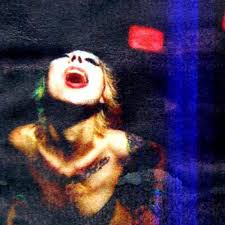The departure of L.I.E.S. label head Ron Morelli to Paris and the accompanying shift of his label towards a more worldwide focus, has left a void in outlets for the thriving experimental electronic underground now emerging in New York. Contemporary to the rise of L.I.E.S, many other small local labels also made their start, but aside from White Material, few have managed to attain global recognition on the scale of Morelli’s imprint, and even fewer have managed more than a handful of releases. First spotted in 2012 with their Bangers & Ash series of 12"s, whose connection to the main label remained hidden for some time, Styles Upon Styles has emerged in 2014 as one of the leading outlets for the wilder end of local electronic sounds. While by no means limited to New York – their discography already includes producers from around the country, Mexico, and Australia – SUS’ dedication to breaking emerging Metro Area talent remains clear, and debuts from Certain Creatures, Clay Wilson, and Gut Nose have proven their commitment towards searching, high-quality drops from unknown locals.
There’s not too much information known about Gut Nose: his name, Andrew Vagabundo, is relatively easy to find, and his 2013 self-released eaT biskiT tape was responsible for generating enough internet-based interest (seen here on Tristan Bath’s 2013 tape round up) to put the SUS label heads on the trail. Beyond that, he lives in Queens, and both by title and sound, his album is easily identifiable as a true continuation of several traditions in New York’s underground, albeit ones that are not so often seen in the contemporary outburst of lo-fi house and techno that L.I.E.S. has been instrumental in promoting. Rather, Gut Nose springs more from the 1980s-1990s collision of house music and hip-hop, but in a very contemporary manifestation of these sounds.
The intersection of these two foundational scenes in New York is something more familiar within the city than outside of it, and was of considerable weight in the golden ages of New York house and hip hop. The divergences in tempo and sound of the two genres led to a breakaway as harder techno sounds and slower rap began to dominate in the late 90s, and the near-extinction of club music in New York under the repressive measures of mayor Giuliani combined with the events of September 11th provided the final nails in the coffin. New York’s thriving underground hip hop community held out for a few more years before other pressures led to its end, but the end result was a void in beat-based creativity that occupied the majority of the noughties in a city that had once been a cradle of these sounds.
Filthy City provides a full-length follow up to the producer’s Vicetropia EP on SUS, and although there is the same divergence of styles on both records, the full-length makes the producer’s intentions and roots much clearer. The LP is arranged in the style of an old-school NYC beat tape, once a celebrated institution in hip hop, and while its individual tracks are available separately digitally, as a statement the side-long mixes provided on the vinyl are a closer match to the producer’s sound. While the run time of the separated pieces on the A-side Filthy City is similar to the mix length, the results are quite divergent. It interpolates elements from the six short pieces across its length much in the style of the most abstract excesses of experimental underground hip hop in the early 2000s. It’s safe to think Definitive Jux as a reference point, although Gut Nose’s sound is dirtier, more noise-influenced, and not done with as much interest in keeping a steady head nod at all times. Tracks are scratched in and out of each other, wildly accelerated or pitched down, elements repeat under beats brought in from other sections, but in a manner that evokes this era without simply repeating it. Playing the tracks in sequence and comparing them to the mix has a similar effect, although the more jarring elements of the mix are a good match for Gut Nose’s style.
The B-side ‘Filthnoid Mixx’ reduces nearly 34 minutes of dancefloor-tempo dirt to a filth-encrusted 19-minute opus, but it does so in a linear fashion that is sequentially ordered identically to the separated tracks. The sound palette remains very similar however: this is some of the dirtiest dancefloor music the New York scene has produced in the newest wave, which is saying quite a lot. As in the first half, there is clear presence of deeply-invested noise sympathies, which is brought out even more when the individual tracks are layered in the mix. On their own, each one possesses a thick carpet of static and distortion that underlies everything on the record, but these combine into a constant, thick, distorted haze that explodes in bursts around the even more distorted percussion. It’s clearly influenced by the same kind of nasty beat science as the first half, with a swung bounce that places it similarly in the family tree of other hip hop-influenced house, but run through late-era underground hip-hop and contemporary roughshod house and techno.
In digging up the work of Gut Nose from the grimiest corners of New York’s underside, Styles Upon Styles have succeeded in unearthing a uniquely modern interpretation of a stylistic intersection that historically had great weight and influence on dance music in NYC and elsewhere. Whether this is the last gasp of a dying tradition or a sign of renewed energy remains to be seen, but Filthy City stands as part of a proud heritage and simultaneously carries those ideas forwards for the future as an ode to its place of origin.
<div class="fb-comments" data-href="http://thequietus.com/articles/16257-gut-nose-filthy-city-review” data-width="550">


